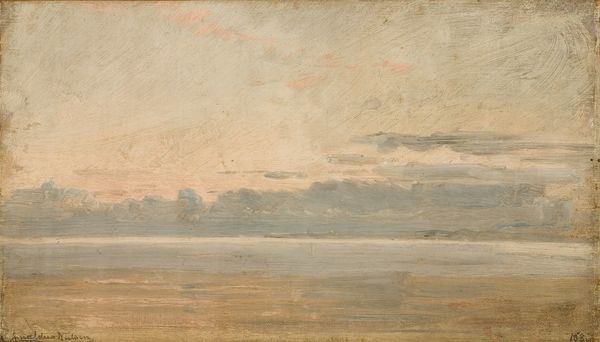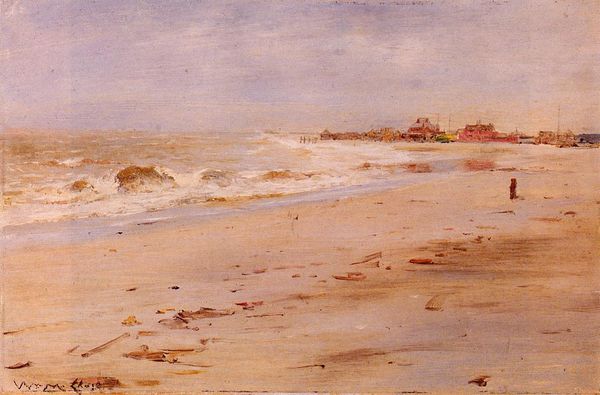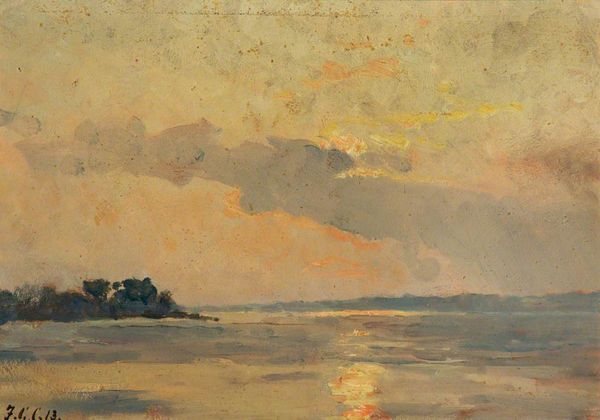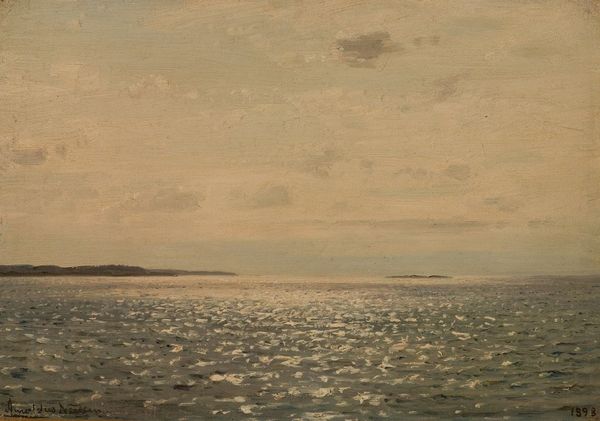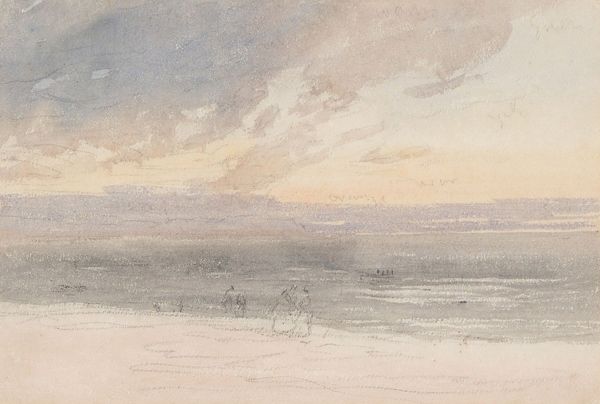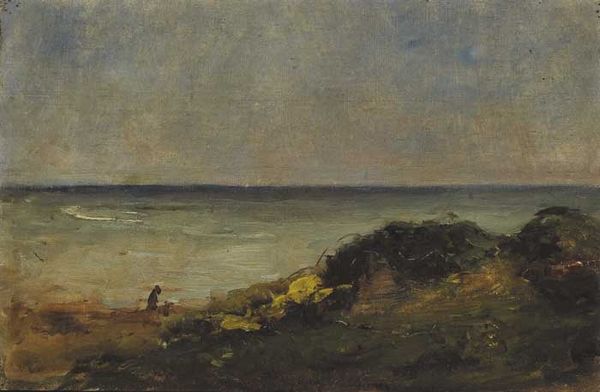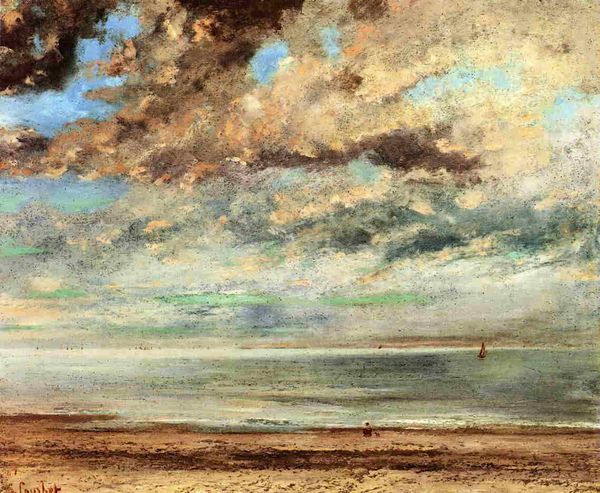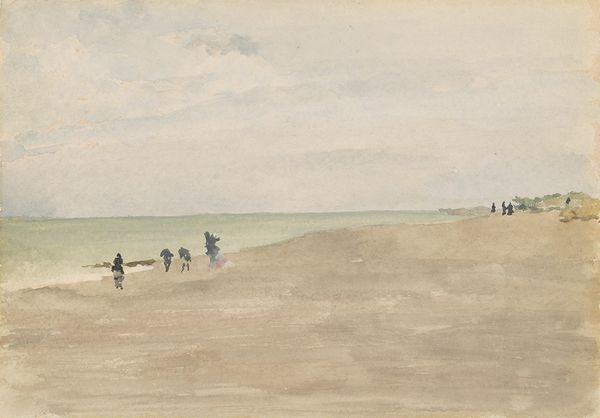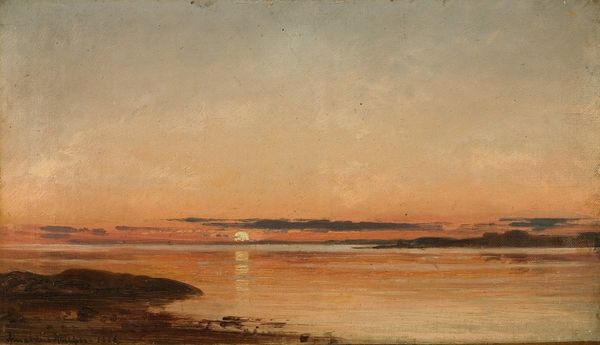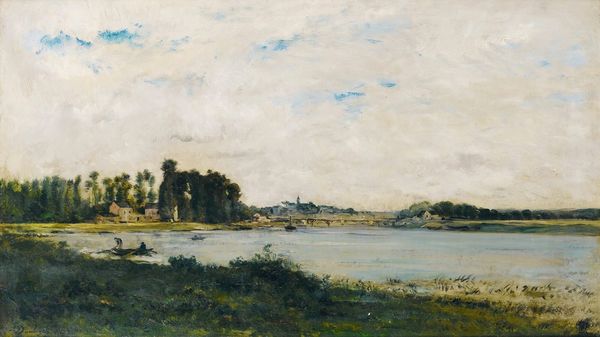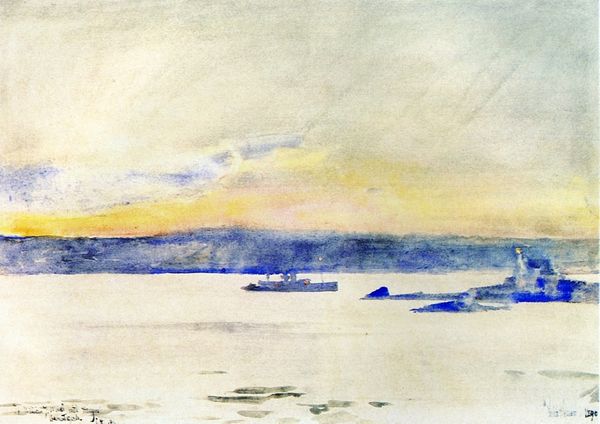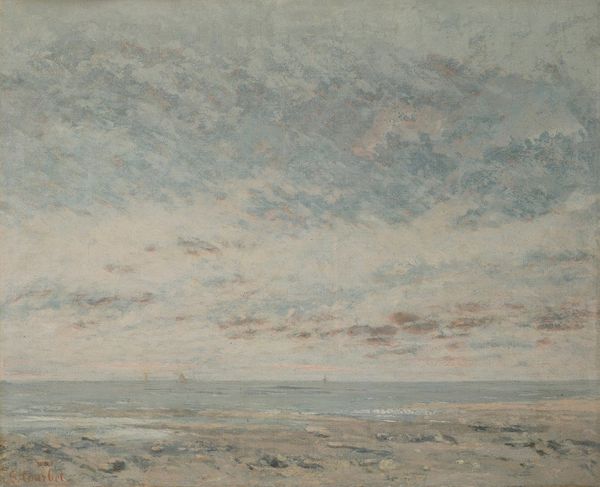
plein-air, watercolor
#
impressionism
#
plein-air
#
landscape
#
oil painting
#
watercolor
#
cityscape
#
watercolor
Dimensions: 12.38 x 21.59 cm
Copyright: Public domain
Editor: Whistler's "Note in Blue and Opal", created around 1884, is primarily watercolor on paper. The title hints at its concern with capturing a transient mood. I'm struck by how delicately he's rendered this cityscape, it feels very ephemeral. What do you see in this piece, considering the era it was made? Curator: Whistler, you know, challenged the conventional art world. The Impressionists aimed to depict immediate sensory experiences. Whistler took this further into abstraction and into a sort of visual music. But it wasn't without social consequence. His famous lawsuit against Ruskin occurred just a few years before this. It reshaped ideas around artistic license. Ruskin saw art as narrative and truthful, but Whistler positioned the artwork as an aesthetic arrangement of forms and colors divorced from social value. Do you see how a title like “Note” reinforces the musical idea? Editor: Yes, like a quick sketch for a musical idea, very subtle. The city feels secondary. Curator: Precisely. In that regard it’s useful to ask how something like a "cityscape" functions when it appears weightless. One might explore this from a political angle, especially since he made quite a show of suing someone over how "art" gets interpreted. Who has the right to criticize art, what authority do we grant art and the critic? In what ways are cities romanticized or avoided during urbanization and industrialization? Editor: I hadn’t thought of it that way, viewing this through a political lens. It does open up the piece quite a bit. Curator: Understanding the context certainly complicates and enriches our viewing, and it reveals a powerful perspective on artistic independence. Editor: I'm leaving with so much to consider about art criticism, and the social and cultural forces that influenced this artwork, more than just thinking about pretty colors. Curator: Indeed, seeing it as part of an active historical dialogue shifts our perspective entirely.
Comments
No comments
Be the first to comment and join the conversation on the ultimate creative platform.
